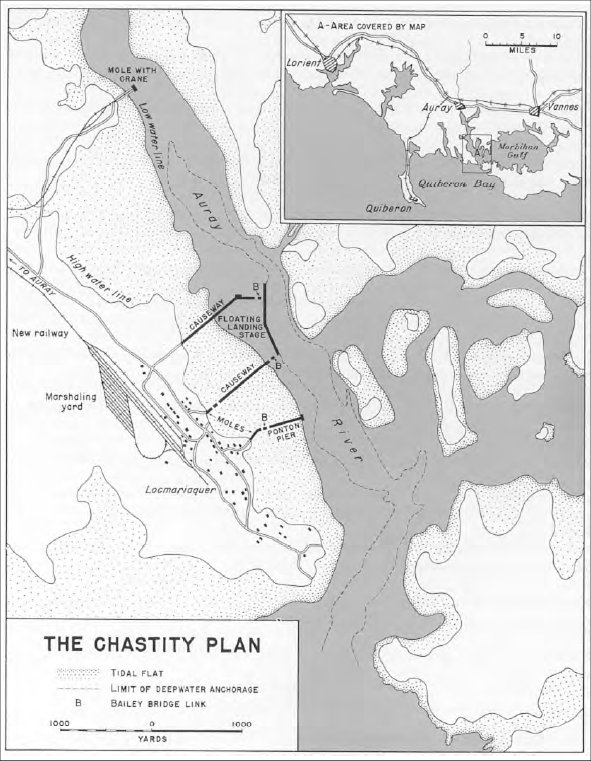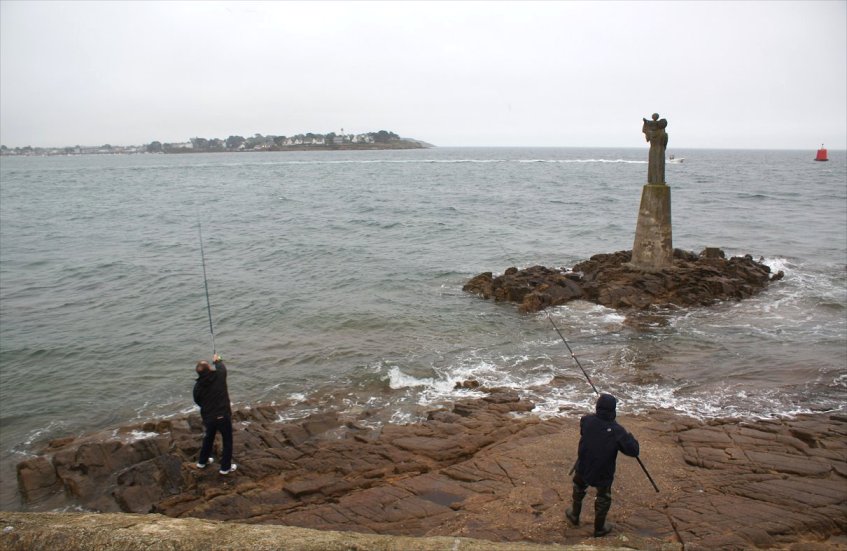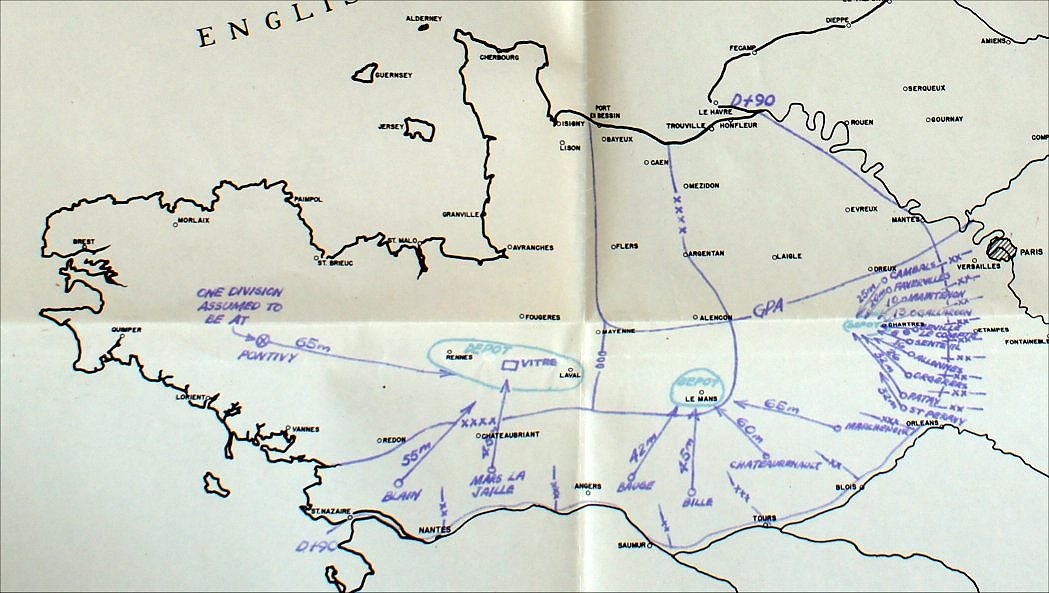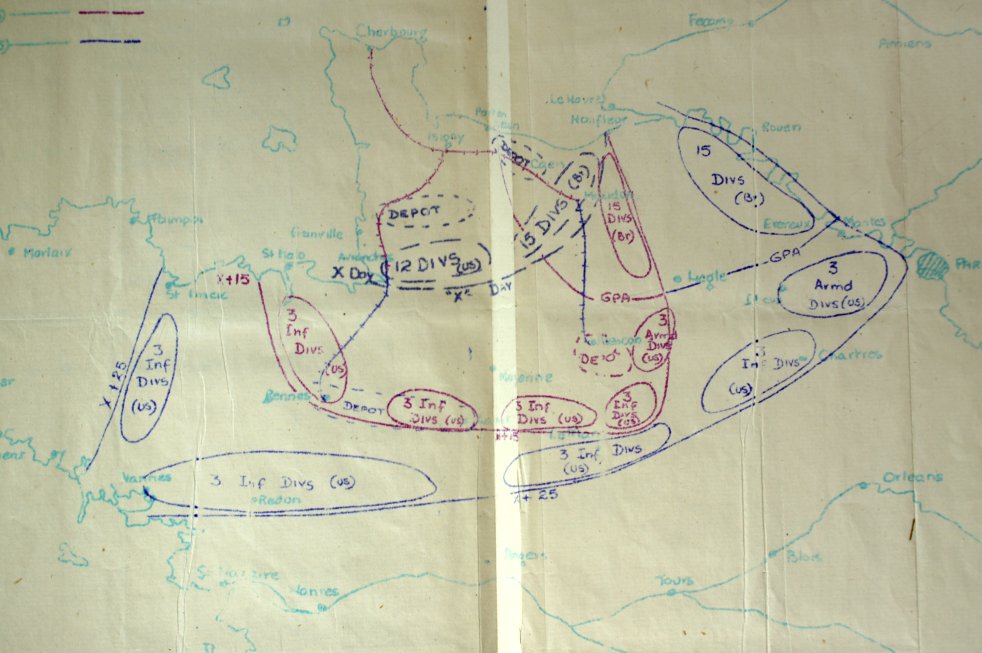So what was the root cause of these supply problems?
Phase lines had a profound impact on supply. In an April 7,
1944 meeting
at St Paul's School in London, Montgomery unveiled his planning maps
complete with phase lines.
Omar Bradley had prevously asked Monty to eliminate the phase
lines, and he again objected, stating that they limited iniative and
could harm troop morale if the men discovered that
they were behind schedule, but Monty assured everyone that the phase
lines were
simply for planning - created because it was American standard
procedure, so the phase lines remained. The plan
foresaw fighting German reserves, but it did not envision a decisive
battle west of the Seine. They assumed that the Germans would
fall back and defend river crossings. As the projected advance
progressed, the battle lines became longer - but a potential thinning
of the German line
and a resulting Allied breakthrough was not foreseen. It was
not part of
the plan, and it was not planned for. The plan was to halt at D+90 for a month at the Seine in order to
consolidate and prepare for an advance on to Germany. On
D+120, the US advance would continue after an advance base had been
established in the
Rennes-Laval area with a subsidiary base near Chartres-LeMans.
Plans and projections continued up until D+350, but they became
much more vague with time. Planning had been made for a lodgement but not for an advance afterward.
Although Montgomery claimed that the phase lines would not limit
the advance, they were used to plan supply - and so in effect they DID
limit the advance. The phase lines were the basis for the number
of transportation companies, the number of port clearance
units, the number of railroad repair units, and the number of road
repair units. If the advance went as planned, there would be
trucks, port clearance units, road repairmen, and railroad repairmen
when they were needed. If the advance was slower than planned, men would
be idle. But if the advance was quicker than
planned, there would not be enough trucks, not enough road
repairmen, not enough
railroad repair men, and not enough men to open up the ports. It
was the projected slow rate of advance that assumed a
relatively late liberation of the Seine ports, making the Breton
ports so important.
Only four years before, the Germans had broken through at Sedan and
improvised a quick and impressive advance to the Channel coast then
across France. In Russia, advances were sometimes made quickly. In
the deserts of North Africa, advances could come quickly. Why did the Allied plan
for northwest Europe not foresee that an Allied army could do the same? Allied thinking
was still rigid and methodical in this regard, little different than the mentality of a First World War
general. Although both British and American armies aspired to be flexible and adaptable, both armies
often followed, especially at higher levels, a kind of directive command where the general manages
and controls. In directive command, subordinates are not trusted
to make the right decisions. Both armies had made attempts to
copy the German system, where subordinates are told what to do but
given the freedom to decide how. The subordinate helped advise
the commander, and his views were respected. The Allied high
command showed a top-down mentality. It was warned that
logistical plans were faulty, but they did not listen. The
consequences were severe, with many men dying as a result. The root cause
was an outdated
command philosophy and the poor decisions that came from it. |
 |













